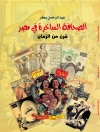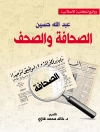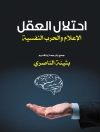Communications and Mobility is a unique, interdisciplinary look at mobility, territory, communication, and transport in the 21st century with extended case studies of three icons of this era: the mobile phone, the migrant, and the container box.
* Urges scholars in media and communication to return to broader conceptions of the field that include mobility of all kinds–information, people, and commodities
* Embraces perspectives from media studies, science and technology studies, sociology, media anthropology, and cultural geography
* Discusses ideas of virtual and embodied mobility, network geographies, de-territorialization, sedentarism, nomadology, connectivity, containment, and exclusion
* Integrates the often-neglected transport studies into contemporary communication studies and theories of globalization
表中的内容
Acknowledgments ix
Introduction: Redefining Communications 1
Part I The Return of Geopolitics 19
1 Communications, Transport, and Territory 21
2 Constituting Europe: Empires, Nations, and Techno?]zones 37
Part II Reconceptualizing Communications: Mobilities and Geographies 57
3 Sedentarism, Nomadology, and ‘New Mobilities’ 59
4 Disaggregating Mobilities: Zoning, Exclusion, and Containment 77
5 Geography, Topography, and Topology: Networks and Infrastructures 95
6 The Virtual and the Actual: Being There, Disembodiment, and Deterritorialization 113
Part III The Mobility of People, Information, and Commodities: Case Studies in Communications Geography 131
7 Migration: Changing Paradigms, Embodied Mobilities, and Material Practices 133
8 Mobile Communications and Ubiquitous Connectivity: Technologies of Transformation? 159
9 Containerization as Globalization: The Mobility of Commodities 199
Index 233
关于作者
David Morley is Professor of Communications at Goldsmiths College, University of London, UK. His work has been translated into 22 languages, and his publications include Television, Audiences and Cultural Studies (1992), Home Territories: Media, Mobility, and Identity (2000), and Media, Modernity and Technology: The Geography of the New (2006). He serves on the editorial/advisory boards of a number of journals, including Cultural Studies, European Journal of Cultural Studies, Inter-Asia Cultural Studies, and Television and New Media.












